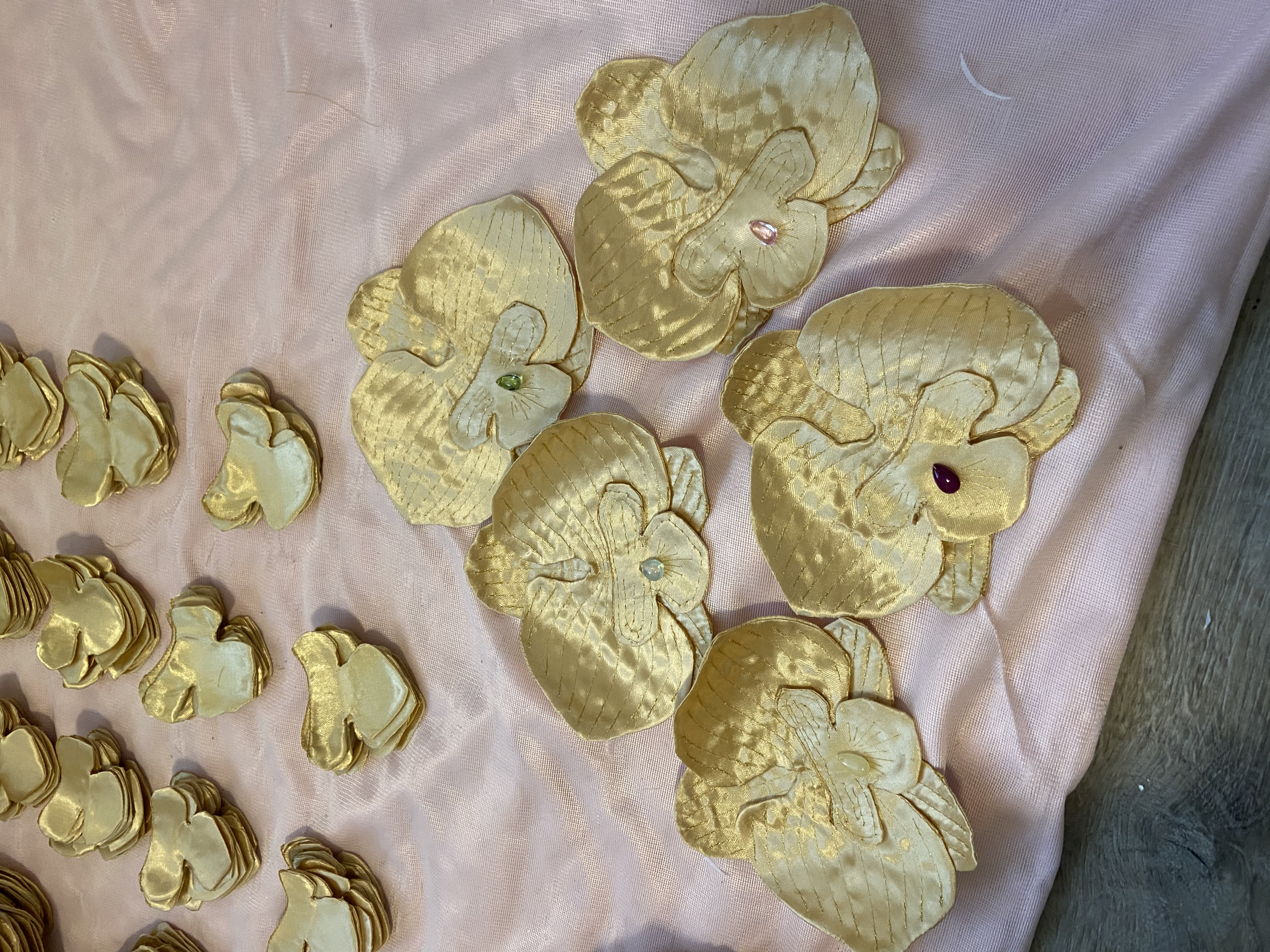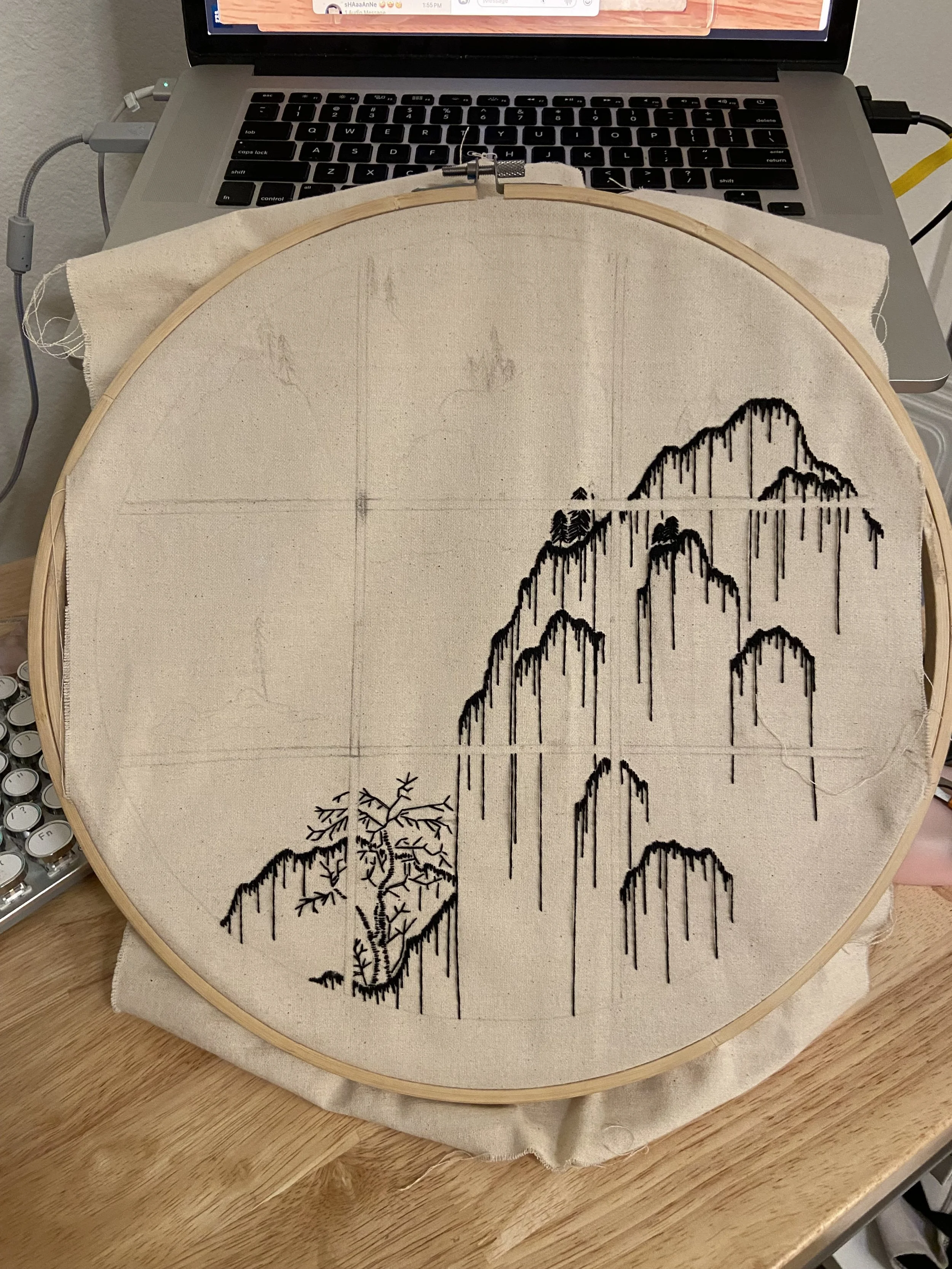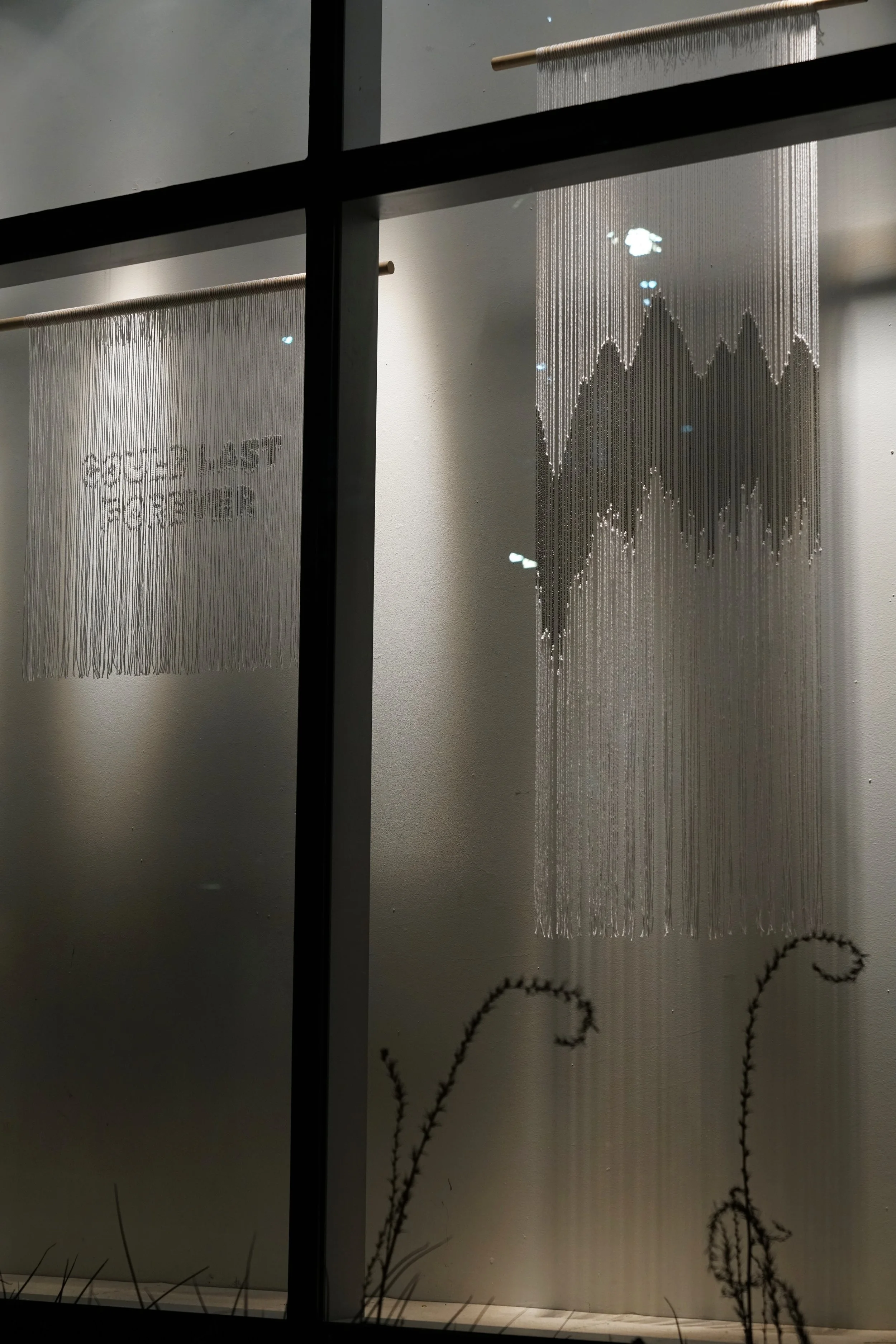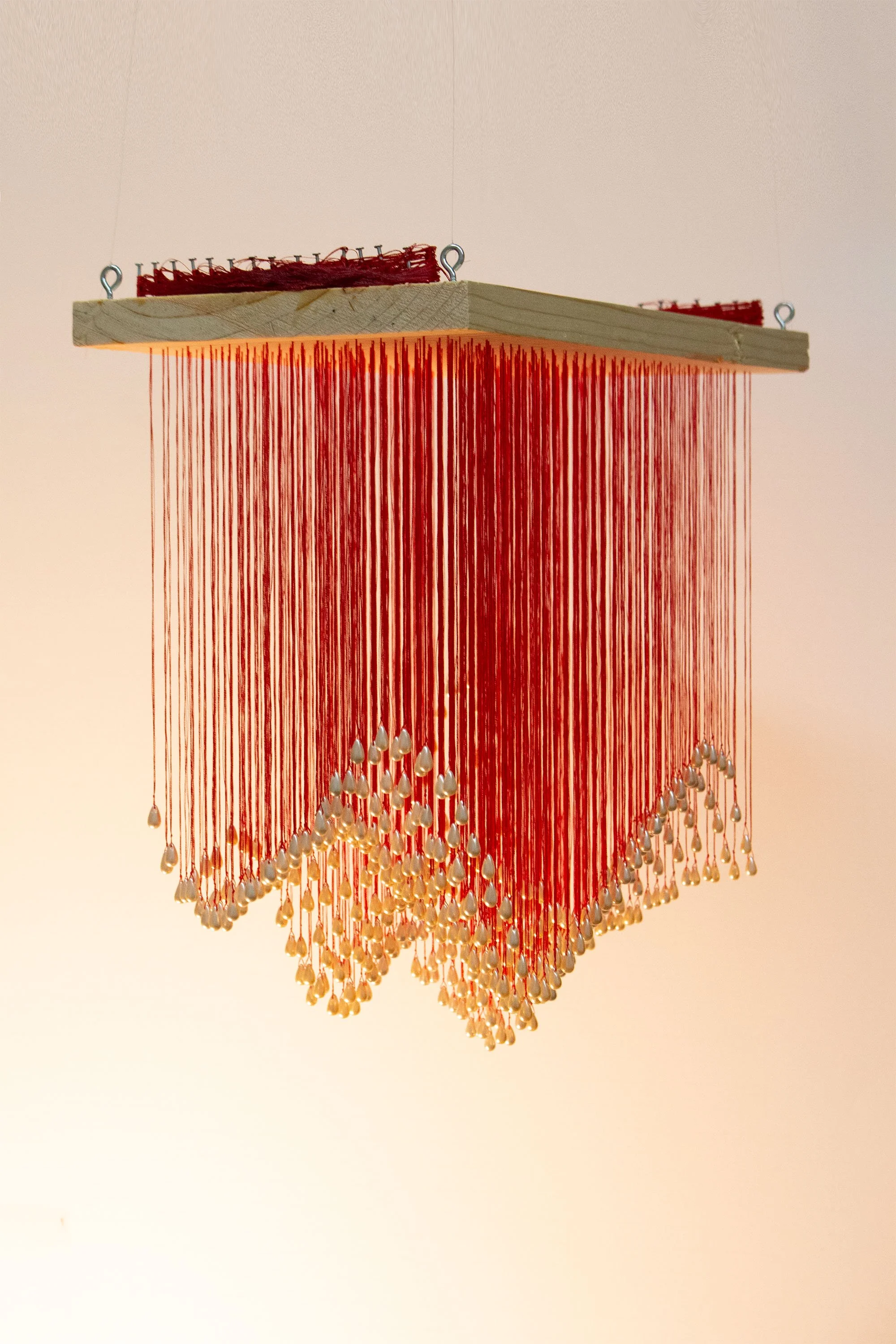Clara Tang
𖦹꩜๑。𖦹°
In this feature, Clara shares the deeply personal journey behind her artistry—from early memories of crafting papier-mâché to the awe she feels while gazing at mountains. Her works are shaped by a love for nature, a connection to her cultural roots, and her experiences as both a sculptor and musician. Join us as we explore how Clara’s passions and practices intertwine, creating art that reflects the beauty and complexity of the world around her.
Learn more about Clara’s creations on her website here.
What is your earliest memory of feeling creative or making art?
.・゜゜・ ・゜゜・.
“I remember playing with watercolors at a young age. My mom actually majored in art in college—more than anything because she couldn’t speak much English at the time—and her medium of choice was watercolor. She also taught me how to sew, which I’m so thankful for since I use that skill a lot in my practice today. A core memory though was doing paper mache crafts in my art class when I was in third grade. We started with a paper bowl and we were supposed to make an animal or something from there, and I made a clownfish. The art teacher was so impressed with it that she got it displayed in the main office. I actually remember finding it kind of funny because I didn’t think it was that good or anything. I remember wondering why she was making such a big deal out of it. I’m not sure what that has to do with my current practice but that’s what came to mind when I saw the question and it makes me giggle.”
Among Mountains II, 2021. Embroidery floss and canvas, 18” x 12”
I wonder, 2024. Yarn, gunmetal chain and wooden dowel, 10’ x 7’ per window.
How does nature influence your work?
“Interestingly enough, the time I find myself most mystified by nature is when I’m driving—or rather, when someone else is driving and I get to gaze out the window. I find this a little ironic, that I appreciate nature most when I’m in a man made gas burning chunk of metal. But when you’re moving through at that speed, you can see the landscape shift and change before your eyes. Every angle looks slightly different. This is especially true with mountain scapes. That’s what drew me to sculpture in the first place, being able to create something that can be viewed differently from every angle, and why mountains serve as a running theme in many of my works. They also have such a sense of vastness and grandeur that often reminds me how small we humans are, and I hope that feeling of awe and wonder comes across in my work as well.”
What is a guiding principle or belief that keeps you anchored in your creative practice, especially during challenging times?
.・゜゜・ ・゜゜・.
“For me, creativity is a healing practice. I find the repetition meditative. It also gives me a sense of gratification as I see my actions creating something out of nothing, as I see my vision coming to life. Honestly, I simply can’t go that long without making something or feeling the itch to create, no matter the circumstance. I start to feel stagnant, anxious, and like I’m losing a part of myself. But when inspiration strikes again and I get back to creating, I feel more motivated, more confident, more alive. I still don’t know if I have a co-dependent relationship with art in that way or whether that’s normal for creative people. Maybe it’s because art has been tied to my identity in some way since I was very young (I started playing violin at 5 years old) that I feel so lost without some sort of creative outlet. I wonder about this a lot. Maybe someone reading this may feel the same. Either way, it takes a lot of organizing my time and planning, but I always make time for it alongside my other pursuits in life because I simply feel like I have to. Balancing it all is at times stressful, but I couldn’t imagine living any other way.”
Resilience II, 2024. Organza, thread and wood dowel, 36” x 20” x 1 3/8”
The color red appears frequently in your work. Does it hold specific meaning or connect to a broader theme in your art?
“I typically like to keep my color palette very minimal because colors tend to be quite charged. They're so tied to emotions, environments, and memories that colors can so easily alter the way a piece is viewed. The color red has such a long running history of symbolism especially in Asian culture—representing good luck and happiness; the red thread, a symbol of fate and interconnectedness. So when I started working with textiles and thread, it just made sense to use the color in my work.“
Threading, 2024. Thread and resin, 67” x 70” x 46”
Fate Suspended, 2021. Pearl beads, thread, wood and hardware, 13” x 14” x 7 1/4”
Your work explores significant social issues through repetition and organic forms, reflecting nature and cultural heritage. How do these themes influence your creative process, and what do you hope people take away from your art?
“Both nature and culture are subjects I have complex feelings about. Both hold a sacred record of history, yet both inevitably change over time and constantly evolve into something new from generation to generation. In this evolution, often parts are lost in exchange for growth. It’s sad and beautiful at the same time. I aim to emphasize the ephemeral beauty of nature and culture in my works and encourage folks to appreciate things that are fleeting.
I grew up in a white community with little connection to my culture other than my mom’s cooking. For a long time I felt lost, but when I see art from Korea or China, I feel a deep connection. Something about it speaks to me—the similarity in aesthetic preferences, the emphasis on nature, the materials used. I’m not sure exactly what it is but these artworks make me feel seen and validated. I often take references from these works and create a modern reimagining of them. My hope is that others with similar experiences, especially Asian Americans, feel the same way when viewing my works.
I use lots of repetition as well to reflect the culmination of smaller parts that create a result that is larger than the individual. Small moments, small actions, small efforts can add up to huge impacts. It’s hard to remember that and stay vigilant in today’s world, and ideally my art can serve as a reminder to do so.”
Finally, who or what inspires you outside of the art world?
.・゜゜・ ・゜゜・.
“I get a lot of inspiration actually from making music. I’ve been producing since I was in high school, and I typically try to capture fleeting feelings in a sound. I explore my relationships with others, the self, and the world around me. I’m fascinated by euphoria and feelings that cannot be described in words. I’ve discussed my relationship with nature as an inspiration for my sculptures, and I believe the feelings imbued by nature are similar to the ones I incorporate into my music. One practice feeds the other, as layers of simple yet lush repetition engulf each other, transporting you into another world. When I’m inspired musically, I’m inspired sculpturally as well. In fact, when I began creating sculptures, my music practice was already well established but I craved being able to express the same transformative, almost other-worldly feeling in a tangible, physical form.”
° ⟢˚⋆.° ༘🎧⋆˚ෆ
You can discover Clara’s music on Spotify under Sleepyhaze and DJ Heartslayer.






-ˋˏ✄┈┈
There is something profoundly moving about being invited into another’s creative world, where each piece carries its own language and meaning. What I find most exciting is the opportunity to learn from those who are masters of their craft or just beginning their exploration. It highlights the boundless nature of creativity and its ability to manifest in ways I might never have imaged.
At the 2022 BFA thesis show, I had the opportunity to experience one of Clara’s pieces in person. The installation, titled Golden Orchid Society, featured over a hundred golden orchids made of silk and thread, suspended from gold hoops. This piece draws inspiration from the historical Golden Orchid Society in Southern China, which provided a haven for women who sought safety and acceptance outside of traditional heterosexual marriage.
Lying beneath the installation on a silky gold pillow, I was enveloped by the collective beauty and significance of the work. Each orchid, unique and meticulously crafted, played an essential role in the composition, contributing to a sense of unity and harmony. The repetition of these golden flowers created a cocoon of softness, lightness, and warmth. As I looked up, I felt as though I had become a part of the whole, immersed in a shared expression of femininity and grace. The two pillows provided for the viewers invited us to rest, raise our gaze, and fully experience the immersive nature of the piece, enhancing the feeling of being embraced by this evocative tribute to independence and community.
Golden Orchid Society, 2022. Silk, beads, thread, gold hoops and pillows, 10’ x 8’ x 8.’






